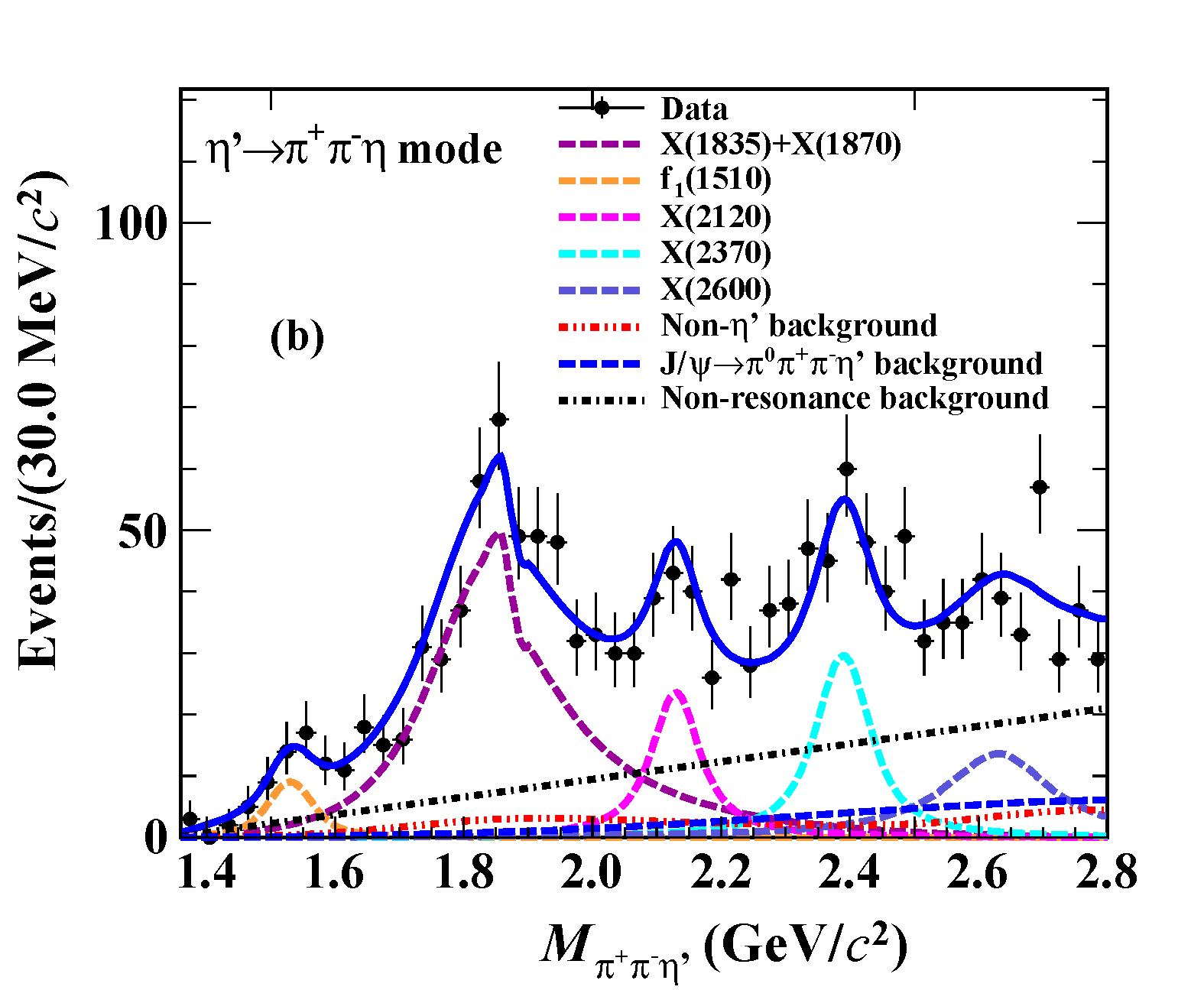BESIII recently reports the first observation of J/ψ electromagnetic (EM) Dalitz decays to X(1835), X(2120) and X(2370) and the measurement of the transition form factor of J/ψ to X(1835). It has been published online in the Journal of Physical Review Letter [Phys. Rev. Lett. 129 (2022) 022002].
The X(1835), X(2120) and X(2370) were first observed in J/ψ →γπ+π-η’, with η’ → γπ+π- and η’ → π+π-η. The state X(1835) was first discovered by BESII in 2005, and a significant abrupt change was reported by BESIII in the slope of the π+π-η’ invariant-mass distribution at the proton-antiproton mass threshold. Further study indicates that the X(1835) has the same spin parity 0-+ with the X(p-pbar),a p-pbar bound state, which has been observed by the BES and confirmed by BESIII and CLEO. Some theoretical speculations believe X(1835) is a kind of p-pbar bound state, however, the X(1835) has not been observed in other processes, such as Y(1S) → γpp-bar, J/psi-->omega p p-bar, and J/psi--> phi p p-bar. The nature of the X(1835) is still controversial.
The electromagnetic Dalitz decays, where an off-shell photon is internally converted into the e+e- pair, provide an ideal opportunity to probe the structure of hadronic states and to investigate the fundamental mechanisms of the interactions between photons and hadrons. Such EM decays are found to be simpler and they allow one to make a more complete theoretical interpretation than the case for pure hadronic interactions. Consequently, these EM Dalitz decays constitute a testing ground for any theory describing the structure of strongly interacting particles. In theory, for the EM Dalitz decay J/ψ →e+e-X(1835), assuming pointlike particles, the branching fraction of the Dalitz decay can be exactly described by quantum electrodynamics (QED) in the standard model. The first measurement of the branching fraction of the EM Dalitz decay and the ratio R≡B[J/ψ→e+ e- X(1835)]/B[J/ψ→γX(1835)] will provide a straightforward test of this pointlike QED prediction.


Fig. 1. Invariant-mass distributions Mπ+π-η’ for selected J/ψ →e+e-π+π-η’candidates for the (a) η' → γπ+π- decay mode and (b) η’ → π+π-η decay mode.
Based on 10 billion J/ψ events collected at BESIII, a detailed study of EM Dalitz decay J/ψ →e+e-π+π-η’ has been performed. The first observation of J/ψ electromagnetic (EM) Dalitz decays to X(1835), X(2120) and X(2370) is reported, as shown in Fig. 1. Then the ratio R is determined to be [1.19±0.10(stat.)±0.14(syst.)]×10-2. The q2-dependent transition form factor (TFF) of J/ψ →e+e-X(1835) is also determined for the first time, which is shown in Fig. 2. Our measurements of R and TFF are essential for understanding the inner EM structure of X(1835), and clearly tell us non-point-like information at the large q2 region.
Fig.2. |F(q2 )|2 distribution for J/ψ →e+e-X(1835) decay




